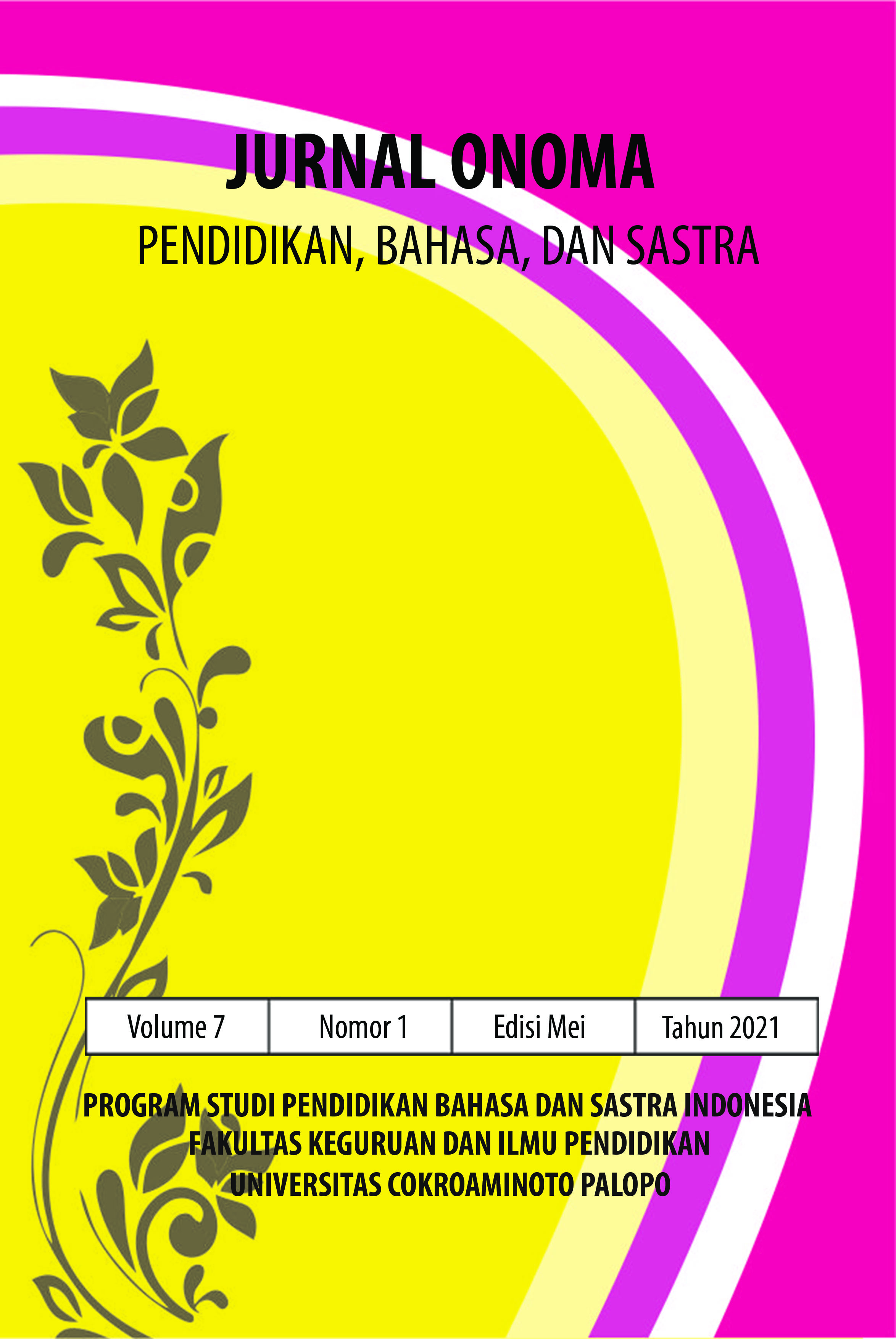Efektivitas Pembelajaran dengan Menggunakan Model Kamus Kata Penggolong Bahasa Mandarin Berbasis Nomina Alfabetis dalam Bahasa Indonesia
https://doi.org/10.30605/onoma.v7i1.624
Abstract
Since the annulment of Presidential Instruction No. 14/1967, which prohibits the celebration of Chinese New Year and Chinese culture in Indonesia, there has been a gradual increase in Indonesian interest in Chinese culture, including learning Mandarin. And with the increasingly tight trade relations between China and Indonesia, the need for human resources who can communicate well, especially oral communication, increases. Mandarin learners in Indonesia are not limited to those who came from Chinese ethnic, but also come from non-Chinese ethnicities. The need for literacy materials for learning Mandarin is getting higher, this is needed to help the process of learning Mandarin language. This research used quantitative research methods with questionnaire data collection techniques. Respondents of this study were undergraduate students of Chinese Literature at Maranatha Christian University Bandung, class of 2019/2020. This study aims to determine the effectiveness of learning Chinese noun classifier words by using a Chinese noun classifier dictionary model based on alphabetical nouns in Indonesian.
Downloads
References
Dimyati, & Mudjiono. (2006). Belajar dan Pembelajaran. Jakarta: PT Rineke Cipta.
He, J. (2008). 现代汉语言研究增编. Beijing: Normal University Press.
Liu, Y. (2001). 实用现代汉语语法. Shangwu Press.
Mulyono, A. (1999). Pendidikan Bagi Anak Berkesulitan Belajar. Jakarta: Rineka Cipta.
Ravianto. (2014). Produktivitas dan Pengukuran. Jakarta: Binaman Aksara.
Sanjaya, W. (2009). Penelitian Tindakan Kelas. Jakarta: Kencana.
Shao, J. (2007). 现代汉语. Shanghai Jiaoyu Press.
Sudjana, N. (1990). Teori-teori Belajar Untuk Pengajaran. Bandung: Fakultas Ekonomi UI.
Sudjana, N. (2010). Dasar-dasar Proses Belajar. Bandung: Sinar Baru.
Sugiyono. (2006). Metode Penelitian Kualitatif dan Kuantitatif. Bandung: CV Alfabeta.
Suryabrata, S. (1990). Psikologi Pendidikan. Jakarta: PT Rajawali.
Suryabrata, S. (2001). Psikologi Kepribadian. Jakarta: Raja Grafindo Pustaka.
Zhang, Z. (1982). 现代汉语. Renmin Jiaoyu Press.
Downloads
Published
How to Cite
Issue
Section
License
In submitting the manuscript to the journal, the authors certify that:
- They are authorized by their co-authors to enter into these arrangements.
- The work described has not been formally published before, except in the form of an abstract or as part of a published lecture, review, thesis, or overlay journal.
- That it is not under consideration for publication elsewhere,
- That its publication has been approved by all the author(s) and by the responsible authorities – tacitly or explicitly – of the institutes where the work has been carried out.
- They secure the right to reproduce any material that has already been published or copyrighted elsewhere.
- They agree to the following license and copyright agreement.
License and Copyright Agreement
Authors who publish with Onoma Journal: Education, Languages??, and Literature agree to the following terms:
- Authors retain copyright and grant the journal right of first publication with the work simultaneously licensed under Creative Commons Attribution License (CC BY 4.0) that allows others to share the work with an acknowledgment of the work's authorship and initial publication in this journal.
- Authors are able to enter into separate, additional contractual arrangements for the non-exclusive distribution of the journal's published version of the work (e.g., post it to an institutional repository or publish it in a book), with an acknowledgment of its initial publication in this journal.
- Authors are permitted and encouraged to post their work online (e.g., in institutional repositories or on their website) prior to and during the submission process, as it can lead to productive exchanges, as well as earlier and greater citation of published work.

















